Family Systems Model
There are characteristics of family systems that make family members vulnerable to problems with drugs and alcohol. Imbalanced or dysfunctional family interaction is the most critical feature making family members at risk for drug/alcohol dependence and addiction. Within the family system, patterns develop that can make the individual more vulnerable substance addiction.
It is important to look at the family as a system. Some key elements of family systems are that they all have rules, values, verbal and nonverbal methods of communicating, boundaries, roles and patterns of interaction. Systems always seek some level of balance. Alcoholism and drug dependency is a dysfunctional element in family life. The result is an imbalance forcing family members to compensate and give up aspects of their own sense of self in an attempt to keep the family in balance. One could describe the alcoholics/addicts family as a top-heavy top that tries to spin in a functional pattern but instead swerves to one side and skids in a diagonal direction until it comes to a stop.
The individuals in this system are all compensating in different yet similar ways. It’s as if they were walking around with a heavy weight on one shoulder; they either have to lean to one side to walk properly or they have to use all their energy to try to compensate and look like they are walking upright. Both positions require a great deal of energy.
Looking at the family as a system is imperative in addressing the problem of drug and alcohol dependency and addiction. If the family system does not change and the family members do not do their recovery work, the same dysfunctional styles of communication and interaction make the addict/alcoholic at risk for relapse when the addict/alcoholic returns to the family after getting into recovery.
To effectively treat the alcoholic/addict, the rest of the family system also needs treatment. The dysfunctional aspect of the disease has affected all members of the family. The high drug/alcohol relapse rate is often attributable to the lack of recovery by the family members. Too frequently, the alcoholic/addict is the focus of help, and the family members deny their own enabling and codependent behavior.
Families can make a difference by seeking help – not just for the alcoholic/addict – but for the entire family system.
